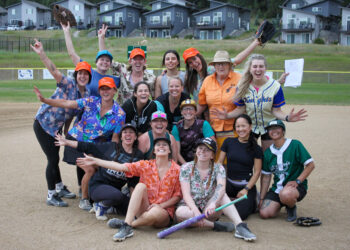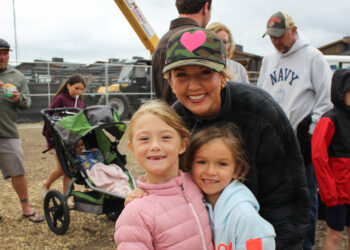By Doug Hare EBS Staff
BIG SKY – Ted McClanahan will be retiring in early September after 24 seasons with the wildland firefighting elite—the U.S. Forest Service Region 1 smokejumpers. As he tells it, it all started in 1992 with a conversation that he had while doing what he loves best: skiing.
An invitation from John Napton, then squad boss of the Helena Hotshots, to try out for his crew while hiking the ridge at Bridger Bowl changed his life. In 1995, after training in Missoula, he would become a rookie smokejumper.
Smokejumping has a long tradition in Montana, which McClanahan traces all the way back to the Great Fire of 1910, also known as the Big Burn. When 3 million acres burned across Washington, northern Idaho and western Montana, destroying towns and timber, the federal government began looking for better solutions to remote fire suppression.
“At that point in time, our ability to protect life and property in remote areas during wildfires was in the Fred Flintstone era,” McClanahan said. “Mule packing into backcountry with heavy equipment was a logistical nightmare.”
In 1940, under President Franklin D. Roosevelt, a smokejumping training program was founded near Seeley Lake, 60 miles outside of Missoula. The next month, Rufus Robinson and Earl Cooley made history when they jumped the Marten Creek fire in the Nez Perce National Forest in Idaho.
“Those guys are legends. They set the bar high, but the evolution of smokejumping since then has been a series of leaps and bounds,” said McClanahan, who served in the 82nd Airborne Division of the U.S. Army for four years after graduating from Washington State University.
McClanahan has trained eight rookie classes of Region 1 smokejumpers, so he understands the skills needed to be an effective rapid response for initial attack suppression in chaotic situations.
“With the improvements in the technology that we have access to, especially with parachutes, smokejumpers have been able to adapt and evolve our effectiveness at getting into tight spots with the right tools at the right time,” he said.
To become a smokejumper, you have to be technically proficient, physically capable and brave, but McClanahan emphasizes other qualities that are essential to modern day fire suppression. “Communication, leadership and teamwork,” he says with confidence. “I learned that from a lot of my badass women mentors.”
“You got to understand, we’re dropping into places we’ve never been before. In most cases, like the Miles City fire this July, we’re working with private landowners, ranchers on ATVs, local fire departments in dynamic, stressful situations. We call them urban-interface zones,” he said, referring to his role providing logistical support to the next generation of smokejumpers battling a part of the Lodgepole Complex fire.
That conflagration burned more than 270,000 acres and was one of the nation’s biggest during this wildfire season.
McClanahan is quick to concede that smokejumpers cannot do their job as effectively without local knowledge and support from local parties. “We have the technical knowledge that we need to communicate as effectively as possible, setting up viable strategies and forming instant teamwork networks. But first thing we do, we’re out there making friends.”
With a wry smile, McClanahan jokes that smokejumpers might be a government entity that actually works. “We strive to be a small, yet effective unit that works with and alongside citizens to protect life and value, and we continue to improve our methods. And we only show up when you need us.”
With approximately 440 smokejumpers currently in the U.S., McClanahan says that he thinks smokejumping is in good hands. Despite ongoing debates about the appropriateness of fire suppression as a core strategy, smokejumpers will continue to be on the front lines using whatever resources they have at their disposal to solve problems on a short timescale under pressure.
“That’s one thing you learn when you see a lot of fires up close—you learn how to pivot, how to adapt, how to evolve in rapidly changing circumstances,” he said.
With numerous wildfires currently burning in western Montana, Region 1 smokejumpers based out of Missoula, West Yellowstone and Grangeville, Idaho, will be on the front lines for the foreseeable future.
When asked about what he will miss most about jumping out of planes for a living, McClanahan says it will be the camaraderie. “Sure there is a sacrifice—being away for extended periods of time—but I’m lucky to be part of group of guys who,” he pauses and thinks, then says, “a group of guys who know how to get things done.”














